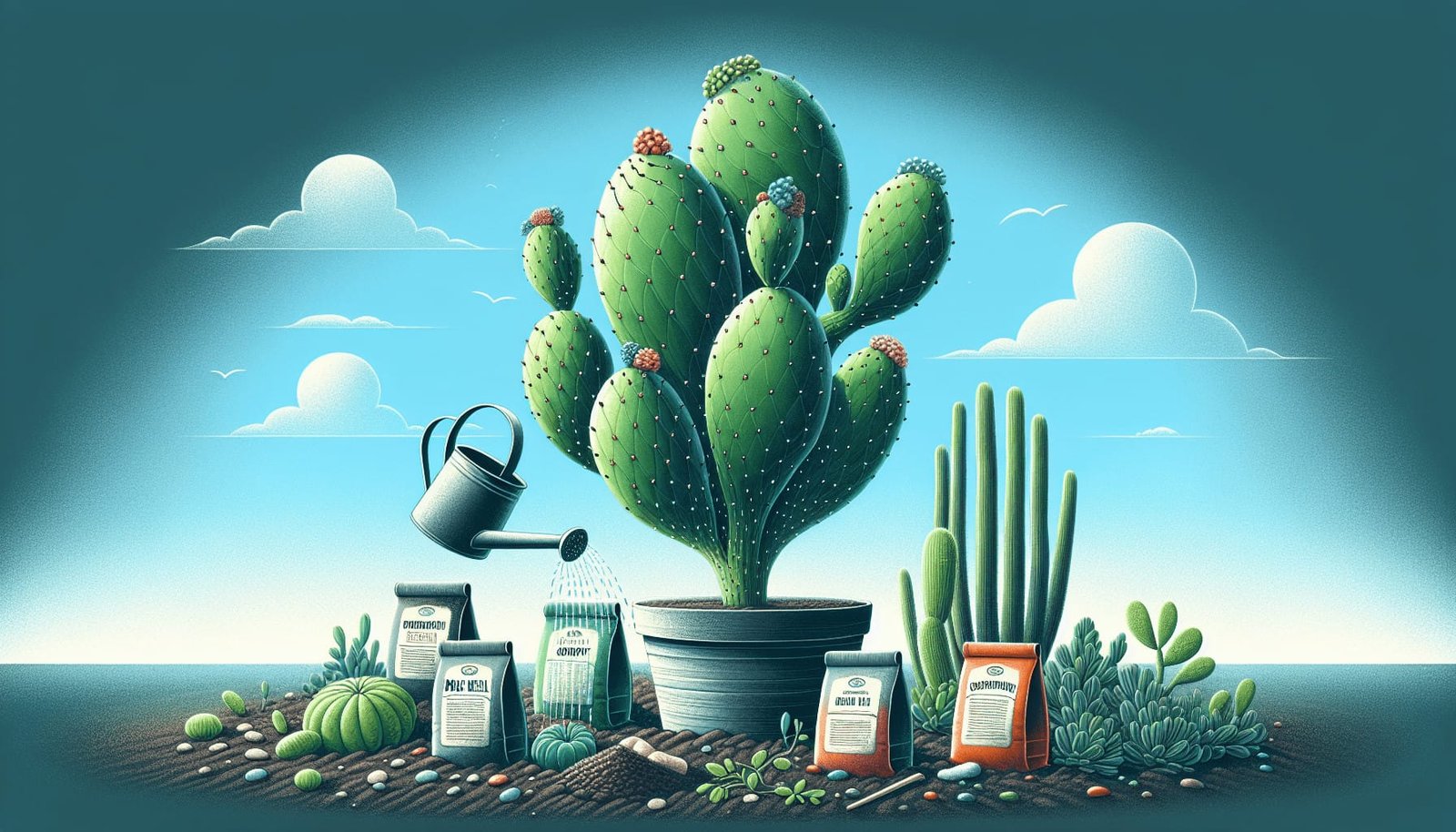Have you ever wondered what the secret is to growing a healthy and thriving Nopal cactus? These resilient plants, which are both visually stunning and practical, can be a part of your garden or home decor. However, like any plant, they do need some care and attention to grow their best. A critical aspect of this care is finding the best fertilizer. Let’s explore what makes a particular fertilizer suitable for your beloved Nopal cactus and how it can transform your gardening experience.
Understanding the Nopal Cactus
Before exploring fertilizers, it’s essential to understand what a Nopal cactus is and what it needs. The Nopal cactus, also known as Opuntia, prickly pear, or paddle cactus, is a type of cactus native to arid regions. Known for its flat, paddle-like pads and vibrant blooms, this plant is not just ornamental; it’s also edible and used in various cultural cuisines.
The Basic Needs of Nopal Cactus
Like any plant, the Nopal cactus requires specific conditions to thrive. Its native habitat is dry and nutrient-poor, so it is accustomed to full sun exposure and well-drained soil. With these conditions, it’s essential to mimic its natural environment as much as possible at home. This means making sure your Nopal cactus gets plenty of light and isn’t overwatered.
Why Fertilize Nopal Cactus?
You might ask why a plant that thrives in nutrient-poor soils needs fertilizing at all. Despite their hardiness, Nopal cacti can benefit from a little help in non-native gardens or pots. Fertilizing can support growth, pad production, and flowering, enhancing both their aesthetic appeal and nutritional value.
Benefits of Fertilizing Nopal Cactus
Enhanced Growth: Proper fertilization can accelerate the growth of your Nopal cactus, making it larger and healthier.
Increased Flowering: While cacti are generally not known for abundant blooms, the right nutrients can encourage more frequent and vibrant flowering, adding color to your garden.
Pest and Disease Resistance: A healthy cactus is more resilient against pests and diseases. Fertilizers can help strengthen the plant’s natural defenses.
Nutritional Value: If you’re growing Nopales for consumption, fertilization can improve the density and richness of nutrients in the plant’s pads.

Choosing the Right Fertilizer
The most significant consideration when selecting a fertilizer for your Nopal cactus lies in understanding its specific needs. Cacti require different nutrients than your average houseplant.
Nutrient Requirements for Nopal Cactus
Nopal cacti primarily require nitrogen (N), phosphorus (P), and potassium (K), but in different ratios than other plants. Generally, a balanced cactus fertilizer will suffice. However, a formula with a slightly higher ratio of phosphorus helps in cacti’s blooming and root development.
- Nitrogen (N): Supports growth and the production of lush pads.
- Phosphorus (P): Promotes rooting and flowering.
- Potassium (K): Strengthens cells, helping the cactus resist disease and drought.
Types of Fertilizers
There are various types of fertilizers to choose from, and each has its advantages and disadvantages.
1. Slow-Release Fertilizers:
These provide nutrients gradually, reducing the risk of over-fertilizing. They’re ideal for busy gardeners who want to avoid the hassle of frequent feeding.
2. Liquid Fertilizers:
Perfect for delivering nutrients directly to the roots, liquid fertilizers can be mixed with water and applied when you water your cactus. They offer quicker absorption but need more frequent application.
3. Granular Fertilizers:
These are sprinkled on the soil’s surface and absorbed as you water. They are easy to use and effective over time.
4. Organic Fertilizers:
These are derived from natural sources and are an excellent option for gardeners aiming for a more sustainable approach. They provide trace elements that synthetic fertilizers might lack.
Recommended Fertilizer Ratio
For Nopal cacti, a N-P-K ratio of around 10-10-10 or a slightly adjusted version with more phosphorus (such as 5-10-5) can be ideal. This ensures balanced growth while enhancing flowering.
How to Apply Fertilizer
Correct application equates to maximum benefits without harming your cactus. Here’s how you can do it effectively:
Timing Your Fertilizer Application
It’s crucial to apply fertilizer during the growing season, typically from spring to early fall, when the cactus is actively growing. Avoid fertilizing during the dormant winter months, as this can stress the plant.
Frequency
The frequency of fertilizing depends on the chosen fertilizer:
- Slow-Release: Every 3-6 months
- Liquid/Granular: Every 4-6 weeks during the growing season
- Organic: Depending on its composition, follow the package instructions or consult with gardening experts
Application Process
Water Your Cactus: Ensure the soil is moist before fertilizing to prevent root burn.
Apply the Fertilizer: Follow the package instructions for the correct amount. For liquid fertilizers, dilute as recommended. For granular types, distribute them evenly on the soil surface.
Water Again: For liquid fertilizers, skip this step. For granular and slow-release options, follow with a light watering to help activate the fertilizer and carry nutrients to the roots.

Common Mistakes and How to Avoid Them
Even experienced gardeners can make mistakes when it comes to fertilizing cacti. Here are some common pitfalls and how to avoid them:
Over-Fertilizing
Over-fertilizing is a common problem that leads to nutrient burn and root damage. Stick to recommended amounts and frequencies, and always err on the side of caution.
Using the Wrong Fertilizer
Choosing a fertilizer meant for standard houseplants can harm your cactus. Always use a product specifically designed for cacti and succulents, as these will have the appropriate nutrient ratios.
Ignoring the Plant’s Response
Every cactus can respond differently to fertilizer, based on its specific environment. Monitor your plant’s health after fertilizing. If you notice yellowing pads or stunted growth, it might be a signal to adjust your feeding routine.
Beyond Fertilizer: Other Care Tips
Fertilizer is only one part of the equation for a healthy Nopal cactus. Providing a conducive growing environment is equally important.
Proper Watering
Water when the soil is completely dry, preventing waterlogged roots which can cause rot. In the growing season, water more frequently, reducing frequency during the plant’s dormant phase.
Adequate Light
Place your Nopal cactus in a spot with plenty of sunlight, preferably a south-facing window if indoors or an open garden area that receives full sun.
Well-Draining Soil
Use a well-draining cactus or succulent mix to avoid root rot. You can also create your own mix using potting soil, sand, and perlite.

Potential Problems and Solutions
Even with great care and the right fertilizer, you might encounter some challenges. Here are a few common issues and how you can address them:
Yellowing Pads
This could be due to overwatering, nutrient deficiency, or pest problems. Review your watering and fertilization schedule and inspect closely for pests.
Stunted Growth
Often a sign of insufficient nutrients or improper light conditions, ensure your Nopal cactus has enough fertilization and sunlight.
Soft or Mushy Pads
Typically a result of overwatering, ensure you adjust your watering schedule and check for drainage issues in your potting medium.
Pest Invasions
A healthy Nopal cactus can fend off pests better. If infested, consider organic pest control solutions like neem oil or insecticidal soap.
Conclusion
Growing a Nopal cactus can be a rewarding experience, giving you a unique plant with vibrant blooms and edible pads. By understanding its nutritional needs and providing the right kind of fertilizer, you ensure its health and aesthetic appeal. Remember, a well-fed Nopal cactus is a happy cactus, ready to bloom and thrive in your care. Adjust your methods based on observation, always aiming to replicate its natural environment as closely as possible. In doing so, you not only nurture a plant but create a dynamic part of your home or garden that can bring joy for years to come.


